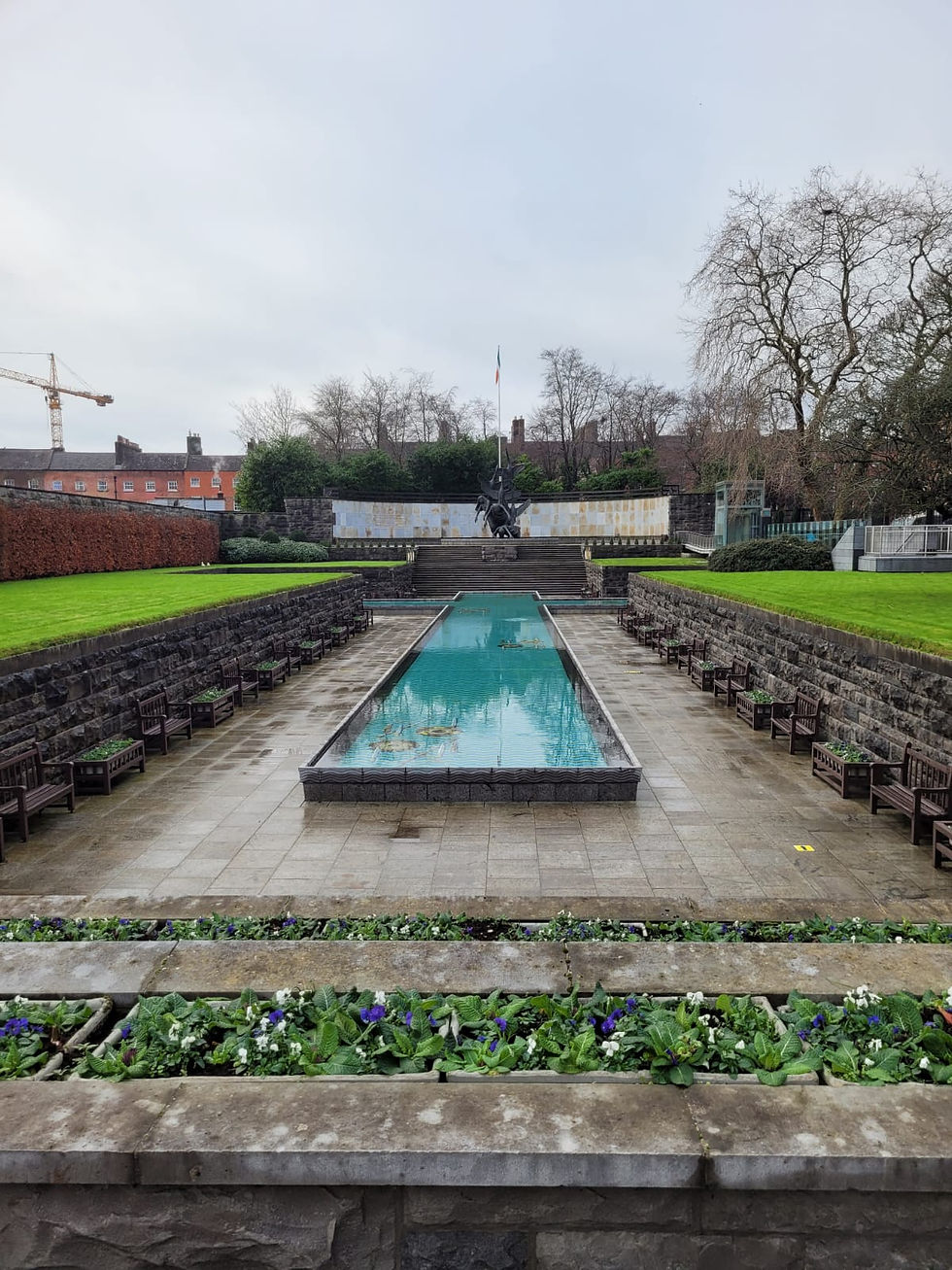Parnell Square, Dublin
- drice901
- Jan 15, 2021
- 3 min read
Today I would like to take you for a stroll around Parnell Square. It is the earliest of five Georgian Squares in Dublin, and perhaps the finest. Originally called Rutland Square, it was re-named in 1933 in honour of Charles Stuart Parnell whose statue stands proudly at the southern end of the square.
In 1745, Dr. Bartholomew Mosse, distressed by the mortality rate of mothers and babies, founded the first Lying-in or maternity hospital in Dublin. The original hospital was in George’s Lane. Dr. Mosse was extremely well connected in Dublin and through his fund raising efforts moved to the much larger hospital we all know as the Rotunda Hospital in 1757. The building was designed by Richard Cassells for Dr. Mosse originally called The New Lying-in Hospital but when the Rotunda Rooms (Ambassador Cinema) were completed in 1791, the hospital quickly became known as the Rotunda to generations of Dubliners.
The hospital depended on public donations for its funding and to this end The Pleasure Gardens were established at the rear of the hospital. Here, the public paid an admission charge of one shilling to enjoy musical events, bowling and the latest amusements of the day. Concerts and galas were also held in The Rotunda Rooms. The hospital has the distinction of being the oldest continuously operating maternity hospital in the world.
The square itself was built in the late 1700’s around the hospital and the Pleasure Gardens. Built on lands leased from prominent land owners, such as Luke Gardiner who was responsible for much of the growth of the North side of the City, giving his name to one of its main thoroughfares Gardiner Street. Due to the large size of the houses on the square, they transitioned well from private residences to commercial usage, for example hotels, offices and schools, and it has fared much better than some of the neighbouring squares and streets.
As we walk by the modern entrance to The Rotunda, The Pleasure Gardens are long gone with the enlargement of the hospital, on the left hand side of the street you can see that the buildings have stood the test of time. At the Northern side of the square we have Dublin City Gallery The Hugh Lane perhaps most noted for housing Francis Bacon’s studio which was moved from its London base and re-assembled here. The gallery is housed in Charlemont House, built in 1763 and designed by William Chambers, who among others designed Somerset House in London.
Just beside the gallery is a small and somewhat neglected memorial called Let’s Dance. This is to remember the three members of the Miami Showband who were murdered in July 1975 near Newry.
A few short steps brings us to Abbey Presbyterian Church better known to Dubliners as Findlater’s Church. Built in 1864 and designed by Andrew Heiton, with its spire standing at 180 feet tall, it cost £14,000 to complete. This whole project was funded, from his own resources, by a prominent Dublin merchant called Alexander Findlater and he gifted it to The Presbyterian Community.
Just across the street is The Garden of Remembrance, opened in 1966 to remember all of those who died in the cause of Irish freedom. The sculpture of the Children of Lir at the top of the garden represents re-birth and resurrection. Perhaps the most poignant moment of its existence was when Queen Elizabeth II laid a wreath here during her visit to Ireland in 2011.











Comments